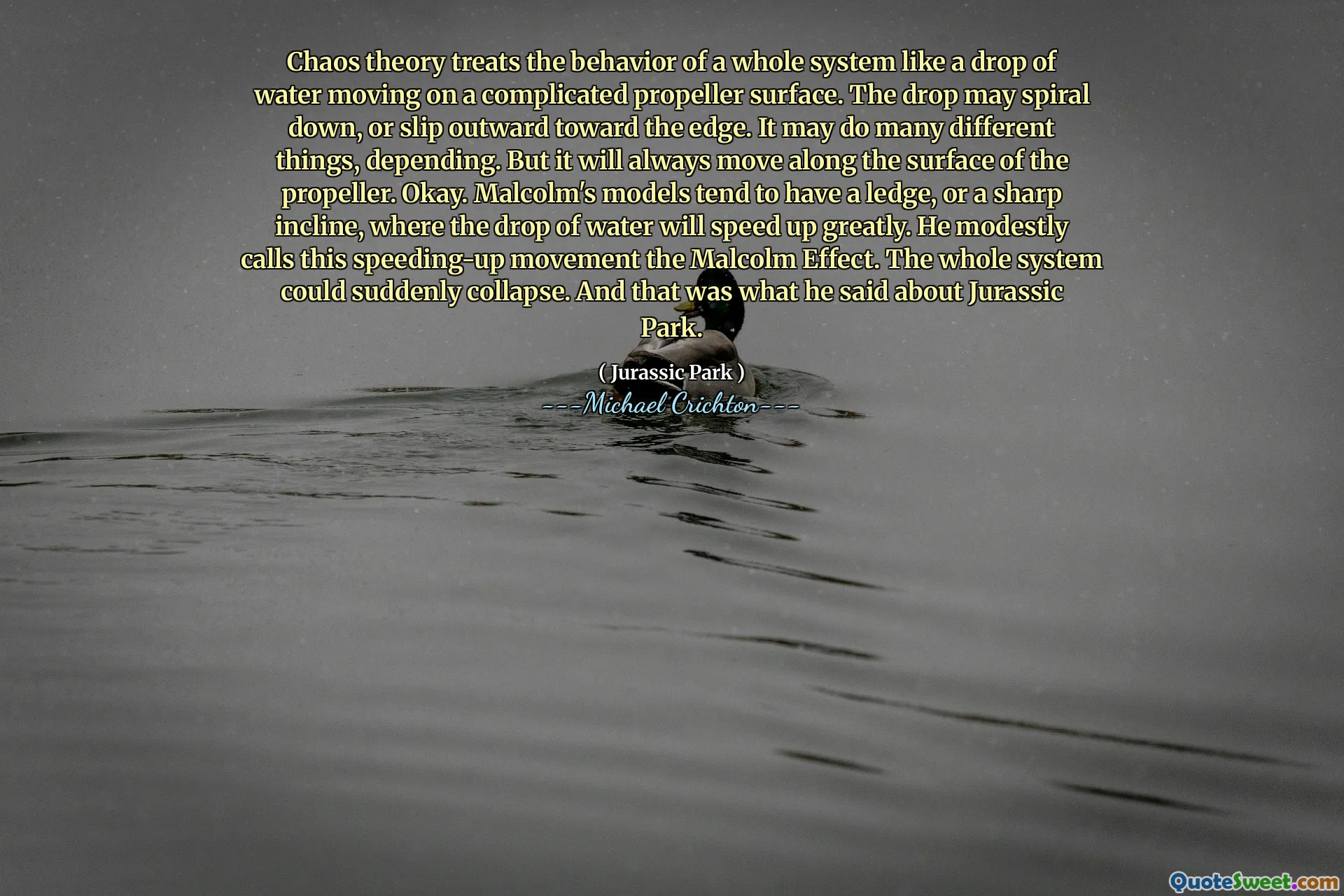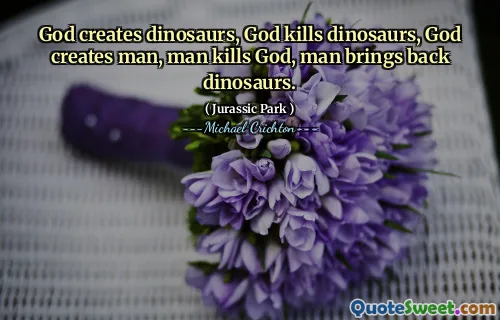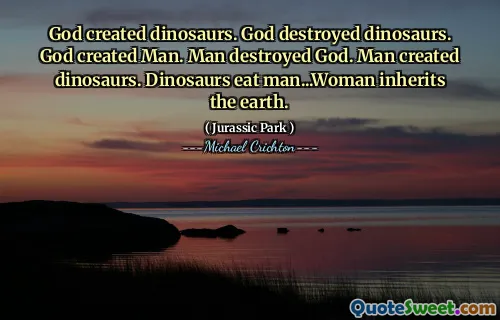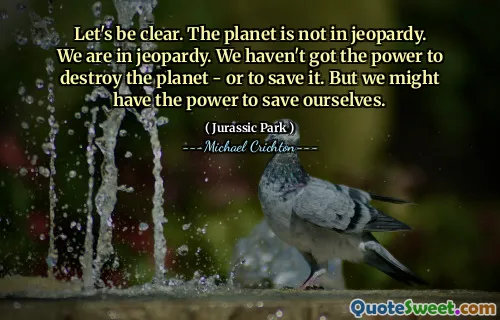
Chaos theory treats the behavior of a whole system like a drop of water moving on a complicated propeller surface. The drop may spiral down, or slip outward toward the edge. It may do many different things, depending. But it will always move along the surface of the propeller. Okay. Malcolm's models tend to have a ledge, or a sharp incline, where the drop of water will speed up greatly. He modestly calls this speeding-up movement the Malcolm Effect. The whole system could suddenly collapse. And that was what he said about Jurassic Park.
Chaos theory illustrates complex systems by comparing them to a droplet of water navigating a sophisticated surface, such as a propeller. The droplet's path can vary significantly; it might spiral inward or move outward, illustrating the unpredictable nature of such systems. Regardless of its trajectory, the droplet is constrained to the surface, indicating that while behaviors may differ, there are underlying patterns.
Malcolm's models incorporate features like steep inclines where the droplet accelerates sharply, a phenomenon he describes as the Malcolm Effect. This suggests that small changes in the system could lead to dramatic outcomes, including potential system failures. He famously applied this concept to Jurassic Park, highlighting the risks inherent in complex biological systems and their capacity for sudden collapse.











